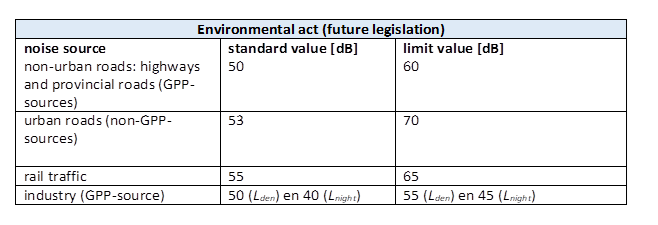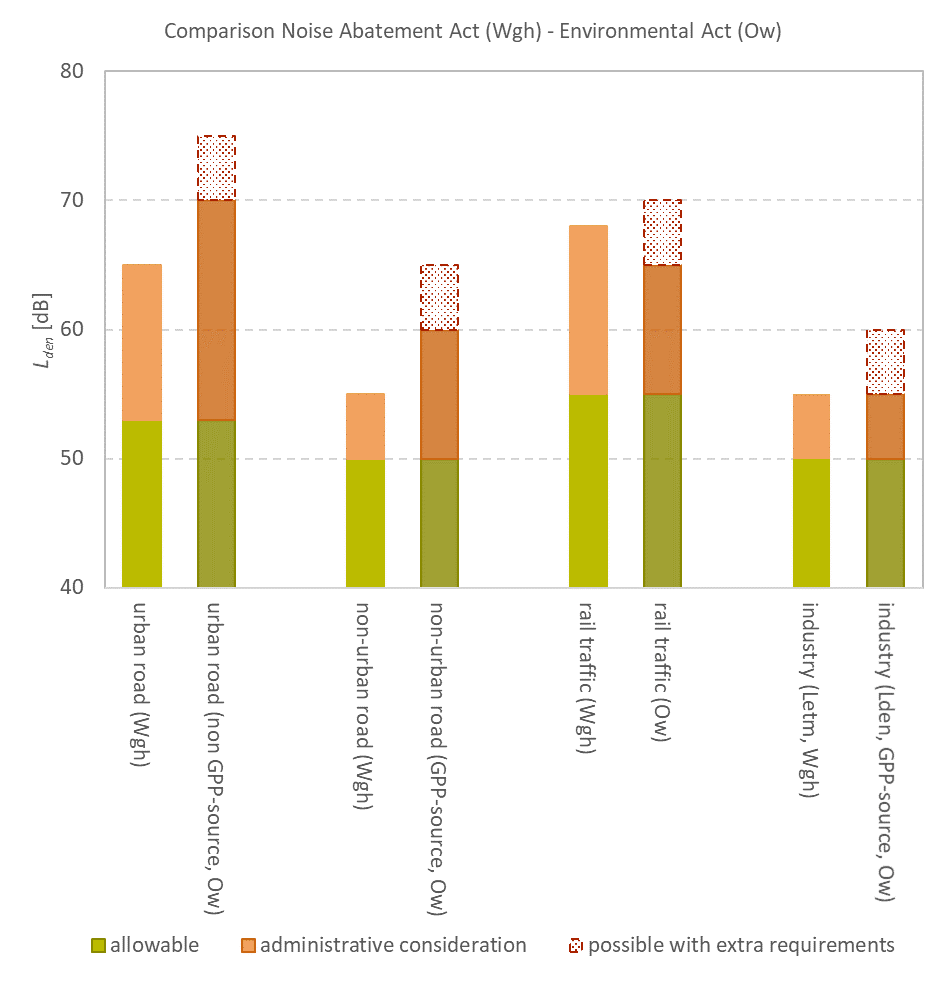
New noise standards: what does the Environmental Act mean for urban development?
In the coming years, municipalities will have a major task when it comes to building new homes. The Environmental Act is fast approaching. Noise has traditionally been one of the limiting conditions for area development; and this will be no different under the Environmental Act. What will the Environmental Act mean for the assessment of noise in spatial construction plans?
In this BLoG, we focus on the construction of new homes in urban areas, because this is currently an important task for municipalities. The current and future standards can be found in the tables below.


At first glance, there are significant differences between current and new legislation. But it should be remembered that this can be explained by the fact that a significant amount of this is dealt with by the expiry of the correction that is currently applied, and this is because there is an expectation that road traffic will become quieter in the future (Noise Abatement Act, Article 110g). This (simplified) correction is 5 dB for lower speeds and 2 dB for higher speeds, which eliminates the difference in the value of the standard for road traffic. For the limit value it appears there is more room to build for road traffic (5 dB), and a little less for rail traffic (3 dB). At first sight, little seems to have changed for industry. However, there is a switch to another unit, which means location-dependent differences may occur. They have not been included here.
Road traffic standards are stricter for GPP sources than non-GPP sources, as these sources are usually somewhat separated from immediate living environments. This makes it easier to put measures in place, such as a noise barrier.
Noise below the standard value (or preferred limit value) is simply considered acceptable; balancing of measures is then not necessary. If the noise lies between the standard value and the limit value (or maximum exemption value), the competent authority has administrative room to move. Noise above the limit value is in principle not permissible; however, a number of exceptions have been made to this in the Noise Supplement Decree. For example, in the event of compelling economic or other social interests, the limit value may be exceeded by a maximum of 5 dB, subject to conditions. As compensation for this, consideration must be given to the use of a low-noise façade. Similar exemption options also partly exist in the Noise Abatement Act (for example, for replacement new buildings) but the motivation of compelling economic or other social interests is new.
The following figure compares the standards between the current Noise Abatement Act and the future Environmental Act. For a fair comparison, the standards for road traffic in the Noise Abatement Act have been converted to the value without correction of Article 110g.

Perhaps unnecessarily: the Environmental Act strongly emphasises the concept of “decentralised, unless”. This means the competent authority is given a lot of scope for local manipulation and can make its own policy concerning the extent to which these exemption options are used.
This comparison is based on the Noise Supplement Decree as adopted by the First Chamber in February 2020, and the Noise Supplement Decree as sent to the Second Chamber in October 2019.

